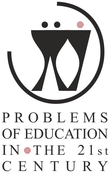THE EFFECTS OF SOCIOSCIENTIFIC ISSUES WITH THINKING WHEEL MAP APPROACH ON CURIOSITY TOWARDS STEM OF YEAR FIVE STUDENTS
| Title | THE EFFECTS OF SOCIOSCIENTIFIC ISSUES WITH THINKING WHEEL MAP APPROACH ON CURIOSITY TOWARDS STEM OF YEAR FIVE STUDENTS |
| Publication Type | Journal Article |
| Year of Publication | 2023 |
| Authors | Siew, NM, Ahmad, J |
| Journal | Problems of Education in the 21st Century |
| Volume | 81 |
| Issue | 1 |
| Start Page | 130-143 |
| Pagination | Continuous |
| Date Published | February/2023 |
| Type of Article | Original article |
| ISSN | 1822-7864 |
| Other Numbers | E-ISSN 2538-7111 |
| Keywords | curiosity towards STEM, socioscientific issue, thinking wheel map, year five students |
| Abstract | This research was conducted to examine the effects of the socioscientific issue with the thinking wheel map (SI-TWM) approach on the curiosity towards STEM, the construct of Exploration and Acceptance. A teaching and learning (TL) module was developed to guide teachers in implementing the SI-TWM approach to enhance curiosity among year five students. Quasi-experimental quantitative research was conducted on 345 year five students (aged 11 years old) in urban primary schools in Tawau, Sabah, Malaysia. A total of three groups were assigned randomly, namely i) socioscientific issue with thinking wheel map approach (SI-TWM, n=115), ii) socioscientific issue approach (SI, n=115), and iii) conventional approach (CONV, n=115). The curiosity towards STEM questionnaire was developed to measure the level of curiosity towards STEM. Data analysis was performed using MANCOVA, ANCOVA, and effect size. The results of the MANCOVA analysis showed that there was a significant effect across the three TL approaches for curiosity towards STEM. Meanwhile, the ANCOVA analysis results showed a significant effect of the SI-TWM approach compared to the SI and CONV approaches on curiosity towards STEM, the construct of Exploration and Acceptance. The results of this research prove that the SI-TWM approach positively impacts the cultivation of students' curiosity towards STEM. |
| URL | https://oaji.net/articles/2023/457-1677583192.pdf |
| DOI | 10.33225/pec/23.81.130 |
| Refereed Designation | Refereed |
| Full Text |
